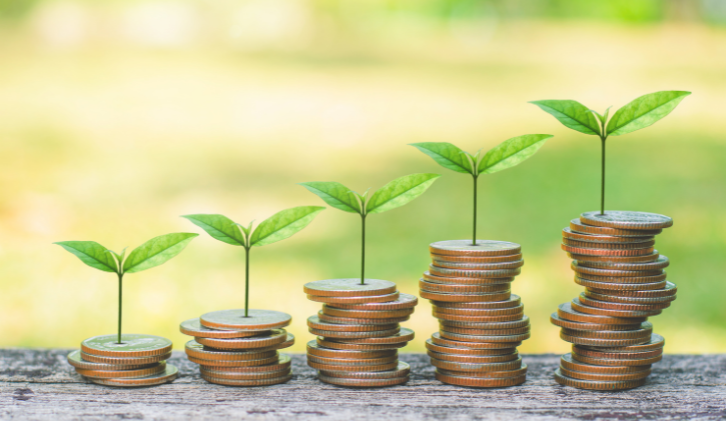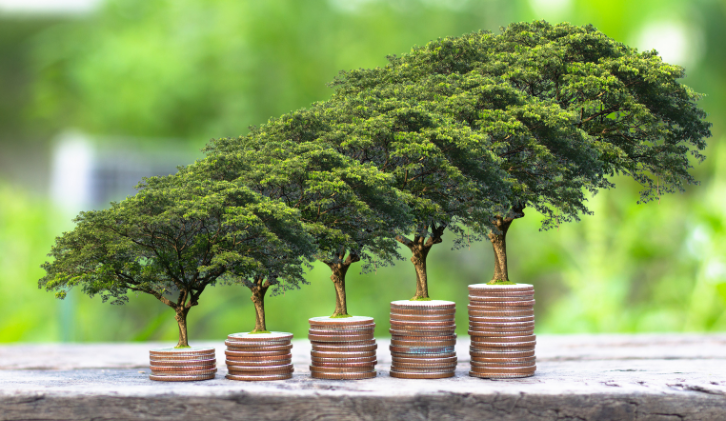The Role of Sustainable and Green Lending in Promoting Social Responsibility for Small Businesses
Discover how sustainable lending empowers small businesses to thrive responsibly, funding eco-friendly projects that build trust with ethically minded customers.
Return to blog posts
Customer trust and loyalty have to be earned. Traditionally, businesses worked to the theory that if their product and customer experience were up to scratch, belief in their brand would be unwavering. But today’s ethically conscious consumer demands much more. They want to engage with businesses that consider the impact of their activities on employees, customers, communities, and the environment – and take actions to promote their well-being.
This recognition of the environmental and social impact of businesses has elevated social responsibility into a touchstone of customer trust and loyalty. To tap into this sentiment, small businesses must demonstrate a collective consciousness for these factors – but this doesn’t come cheap.
Investment is one of the biggest barriers to this shift to sustainability – until now. Sustainable and green lending have emerged to bridge this funding gap:
- Green lending: The provision of financing for projects or initiatives that have a positive environmental impact – typically those that support renewable energy, energy efficiency, clean technologies, sustainable infrastructure, and other environmentally friendly initiatives.
- Sustainable lending: This evolution of green lending takes into consideration environmental, social and governance (ESG) issues and risks, with the aim of increasing long-term investments in sustainable economic activities and projects.
Understanding sustainable and green Lending
Green lending
Green lending aims to redirect capital towards businesses that promote environmental sustainability. Lenders have specific eligibility criteria to identify and assess the environmental benefits of the borrower’s proposed projects or initiatives, such as implementing energy-efficient upgrades or investing in sustainable transportation.
Sustainable lending
Sustainable lending aims to support projects and initiatives that promote long-term sustainable development, taking into account the ESG impacts of the borrower. Therefore, the borrower’s eligibility for funding hinges on their sustainability performance across the three metrics: environmental stewardship, social responsibility, and good governance practices.
Traditional lending
In contrast, traditional lending decisioning models typically focus on the borrower’s financial capacity and their historic creditworthiness. This narrow approach perpetuates invalid assumptions that small businesses are too risky to engage with – leaving them disenfranchised. It also encompasses a broader range of projects and initiatives that don’t have predetermined sustainability criteria.
Social responsibility and small businesses
Morally-centred small businesses that actively contribute to the well-being of communities and address social and environmental challenges gain a competitive edge – and the benefits are compelling: enhanced reputation and brand image, increased employee satisfaction and productivity, improved risk management, long-term sustainability, and stakeholder engagement and partnerships.
Most small businesses are entrenched in their local community and environment. This deep-rooted presence provides an opportunity to build meaningful relationships that benefit the community: they engage with local stakeholders, create jobs, stimulate economic growth, contribute to community development, and reduce unemployment rates.
A confluence of their size and passion for the local area allows them to positively impact their surroundings. Having leveraged their relationships with local stakeholders to fully understand their environmental and social impact, small businesses can adopt meaningful sustainable practices. And they are well-placed to act on their promises because they typically have greater flexibility in implementing eco-friendly measures compared to large corporations.
However, there is a common barrier to achieving social responsibility for businesses of a certain size: funding. Sustainable lending practices break down these barriers for small businesses by replacing rigid legacy lending models with ESG-related eligibility criteria – unlocking funds that have previously been beyond their grasp.
Benefits of sustainable and green lending for small businesses
Favourable decisioning criteria will remain rudderless if small businesses are deterred from applying for sustainable or green loans in the first place by unaffordable repayment terms. Access to affordable capital for socially responsible projects is a critical factor in accelerating the transition to sustainable business practices. Sustainable and green lending initiatives typically offer favourable terms and lower interest rates, making capital more accessible and affordable for these projects.
Fluid access to affordable capital means social responsibility goals and values don’t simply remain nice ideas that don’t get off the ground. These financing channels direct money to socially responsible projects, allowing small businesses to align their funding with their ESG aims.
Supporting sustainable and green lending initiatives
Financial institutions have a crucial role to play in promoting sustainable and green lending. To achieve this, they must replace antiquated lending infrastructures with accessible and affordable products – such as green bonds, green loans, and sustainability-linked loans. A fulcrum of this accessibility is their ability to establish sustainability criteria that borrowers must meet to qualify for loans.
Liberis has reinforced its commitment to responsible and sustainable investment practices by developing Cashback for Green. Inspired by the growing appetite from small businesses for green funding solutions, they have collaborated with their partners to reward customers with cashback when they invest their funding in green purchases.
The government are also key enablers of sustainable finance practices. Motivated by their sustainability targets, they have introduced lending products that will help them achieve their goals. For example, almost £5 billion of funding is available to help UK businesses become greener as part of the government’s commitment to reach net zero emissions by 2050.
Tax benefits and incentives for adopting sustainable practices are also being leveraged by the government in their drive to sustainability, such as reliefs for buying energy-efficient technology for businesses.
Overcoming challenges and limitations
Small businesses may perceive sustainable practices as expensive or believe they will increase operational costs. While these projects and initiatives can yield long-term cost savings, the initial investment or transition period may deter businesses that are focused on short-term profitability. This lack of knowledge might also cloud their understanding of the benefits of sustainable lending practices, preventing them from accessing the necessary funding amid erroneous assumptions that banks – which have a poor track record when it comes to funding small businesses – are their only option.
To plug these knowledge gaps, they must be given agency to understand the sustainable and green lending options that are available – bringing education that reflects this into sharp focus. Empowered by knowledge and understanding of these practices, they can look beyond their bank when seeking funding for sustainable initiatives.
Future outlook and opportunities
Financial technology is driving increased adoption of sustainable finance practices by enabling greater transparency, efficiency, and accessibility of the associated products. These solutions are supporting sustainable banking practices, such as digital platforms that promote responsible investing, provide ESG ratings, and facilitate sustainable lending and payment systems. This innovation helped the market for sustainable finance to accelerate past a trillion dollars in 2021 – a meteoric rise for a sub-sector that didn’t exist a decade ago.
The financial industry is recognising that new products and services are needed to catalyse financing from the widest possible pool of borrowers – otherwise, social responsibility efforts will stagnate. Several new offerings that remain at a nascent stage have been added to the sustainable and green lending ecosystems – such as sustainable trade finance and repurchase agreements linked to ESG criteria, green scrutinization, and green leasing/lending.
Conclusion
ESG-driven social responsibility projects and initiatives without funding will remain impotent. They require sufficient funds to fuel a range of activities through their full lifecycle that will underpin their success: research and development, infrastructure and implementation, scale and reach, education and awareness, ongoing support and maintenance, and collaboration and partnerships.
Sustainable and green lending unlocks access to vital funds by replacing rigid decisioning models with specific eligibility criteria linked to the use of the funds and the borrower’s sustainability performance. This agile approach to lending is helping to democratise finance for small businesses, which have traditionally been sidelined by legacy lenders. Empowered to integrate social responsibility into financial decisions, these businesses are reducing their environmental footprint and enhancing their social impact – and building trust and loyalty with today’s ethically conscious consumer in the process.























